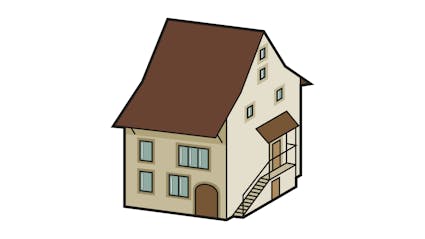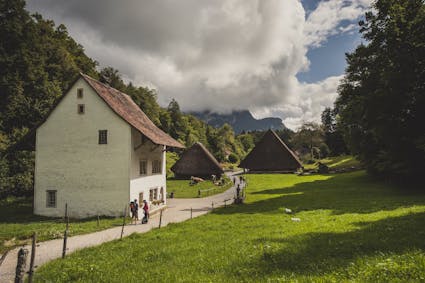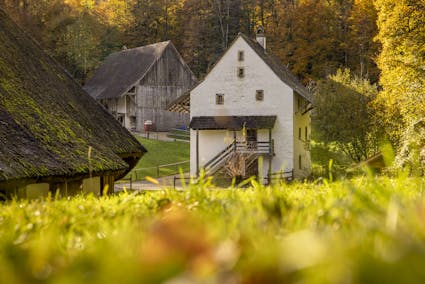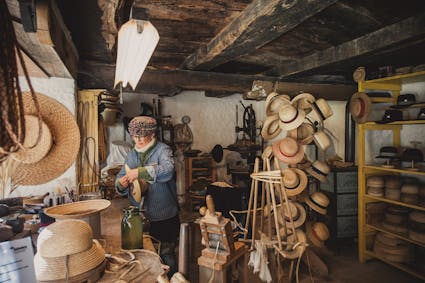211 – Dwelling from Villnachern, Argovia, around 1635
During the general reconstruction after a conflagration this house was built in a style which has rarely survived, a late gothic "stock".

Fire Protection
A conflagration in Villnachern in 1633 destroyed 24 buildings. During the general reconstruction this house was built in a style which has rarely survived, a late gothic “stock”. That means a masonry building which can stand alone. This one may have been part of a row of stone houses. This means of construction was expensive but fire-resistant.

House as Prestige Object
The overall impression of this narrow house with a high and steep ridge roof and typical windows is still that of the gothic style prevalent in our regions until about 1550. Only an affluent owner could afford to build such a perhaps rather small, but highly elegant, house in late gothic style.

All-Rounder
The later occupants were less wealthy. They operated a small farm and were labourers. A family of eight weavers and farmers is recorded here around 1839. In the 1850’s thirteen people, farm hands and day labourers, lived in the house. In 1897 a butcher and a shoemaker are recorded. The final occupants also earned their living with a mixture of small farming and home industry: in the 1940’s Kaspar Spillmann repaired soldiers’ shoes. He hammered in the imposing iron shoenails in a workshop on the ground floor.

Local Stone
Like most buildings in the Ballenberg Open-Air Museum, this building from Villnachern is made of materials native to the original site. The village had quarries. The Jura limestone for the subsequently plastered and whitewashed walls came from there.
“Pure Swissness” tour
Hat making – a craft with history
In previous centuries, people often wore hats – from simple scarves and felt hats to elaborately crafted traditional hats that took days to create by hand. Many farming families plaited straw braids for these as a laborious cottage industry. A complete hatmaker’s workshop has been set up in the dwelling from Villnachern AG (211), where straw and felt are mainly processed today. Look over the hatmaker’s shoulder and see how this ancient craft is kept alive.

Ballenberg
Swiss Open-Air Museum
Museumsstrasse 100
CH-3858 Hofstetten bei Brienz
Company holidays
24 December 2025 to 11 January 2026
Opening hours Administration
3 November 2025 to 8 April 2026
From Monday to Friday
8.30 am to 11.30 am
1.30 pm to 4.30 pm
Opening hours
9 April to 1 November 2026
10 am to 5 pm daily